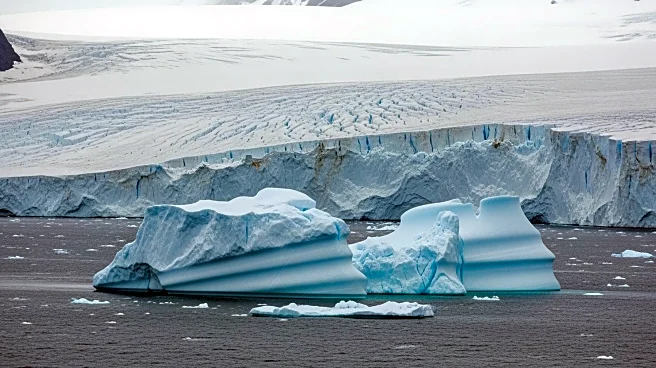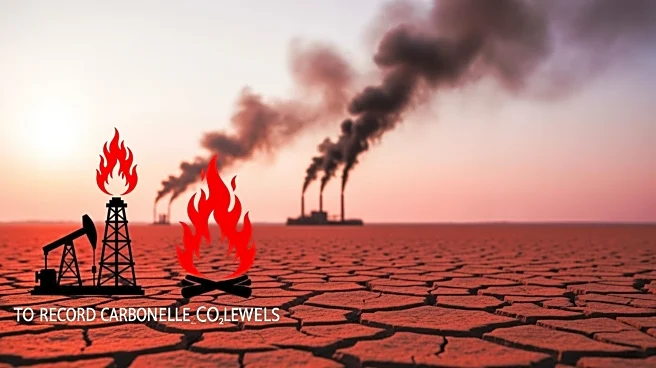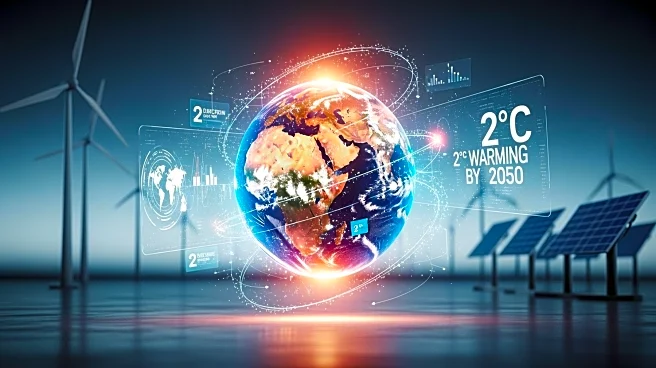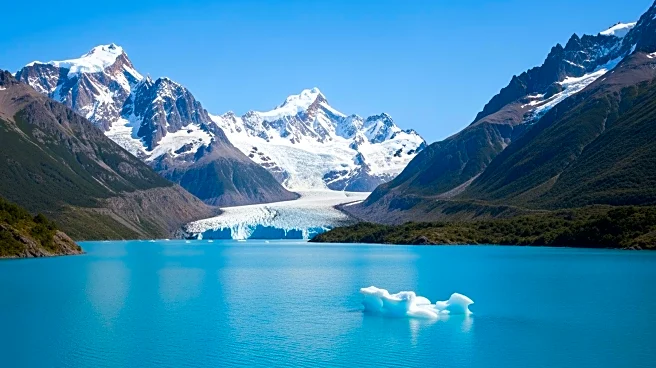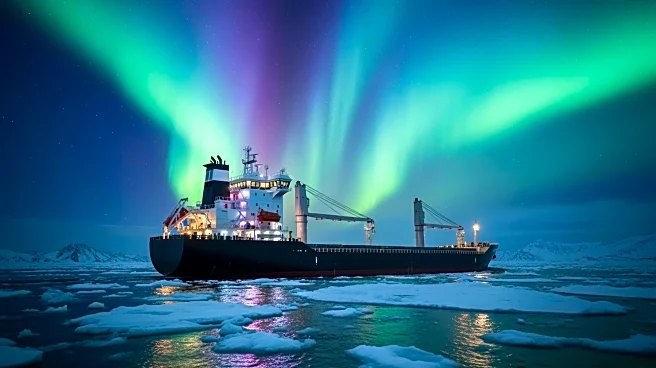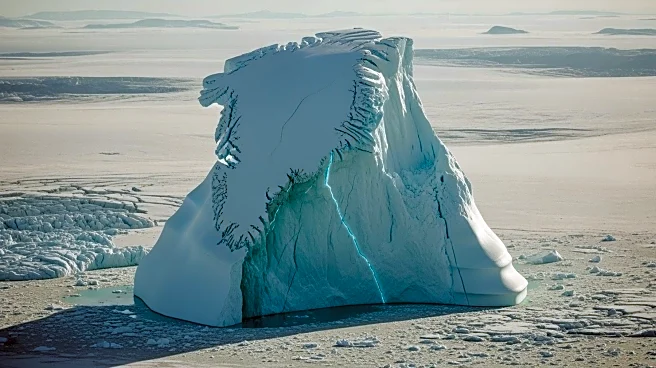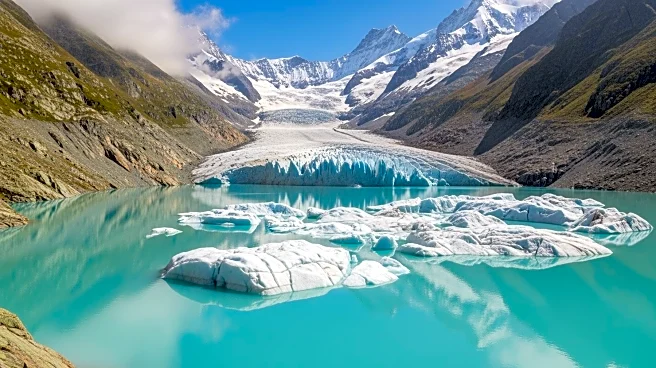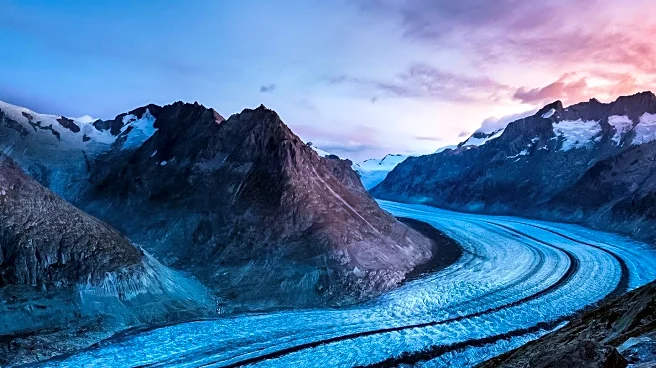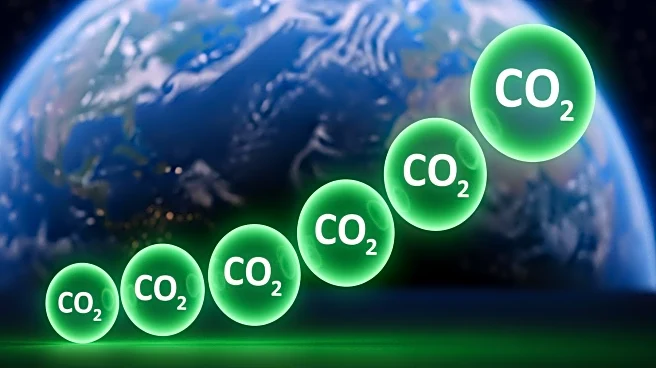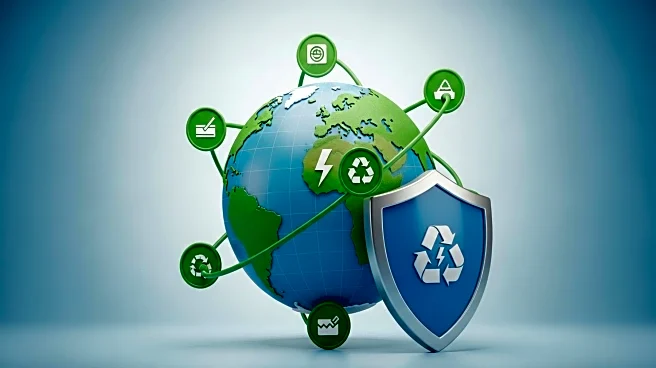What's Happening?
Recent satellite data analysis has revealed that Greenland, the world's largest island, is experiencing significant geological changes. Geoscientists have discovered that the island is both expanding and contracting due to the melting of its ice sheet.
This melting reduces pressure on the subsurface, causing movements in the bedrock and tectonic plates, resulting in Greenland drifting northwest. Over the past 20 years, Greenland has drifted approximately two centimeters each year. The study, led by Danjal Longfors Berg from the Technical University of Denmark, utilized measurements from 58 GPS stations to detail elevation changes and shifts in the island's position. This research marks the first time such movements have been described in detail, providing insights into Greenland's geological dynamics over the past 26,000 years.
Why It's Important?
The findings are significant as they highlight the impact of climate change on geological structures. Greenland's movements have implications for geoscience, surveying, and navigation, as even fixed reference points on the island are shifting. Understanding these changes is crucial for accurate mapping and navigation, which are essential for various industries and scientific research. The study underscores the broader effects of climate change, emphasizing the need for continued monitoring and adaptation strategies to address the shifting landscapes and their potential impact on global sea levels and ecosystems.
What's Next?
The research team plans to continue monitoring Greenland's movements to better understand the long-term effects of climate change on the island's geology. This ongoing study will help refine models predicting future shifts and provide valuable data for policymakers and scientists working on climate adaptation strategies. As Greenland's ice continues to melt, further research will be necessary to assess the potential consequences for global sea levels and the Arctic environment.
Beyond the Headlines
The study raises ethical and environmental questions about the responsibility of global communities to address climate change. As Greenland's geological changes become more pronounced, there may be increased pressure on international bodies to implement policies that mitigate climate impacts. Additionally, the cultural and societal implications for Greenland's inhabitants, who rely on stable land for their livelihoods, must be considered in future discussions.
